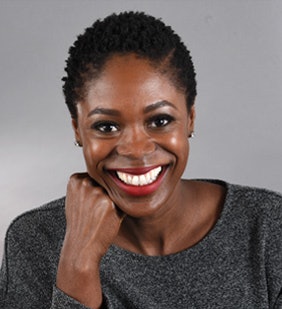Between June 2004 and June 2020, almost 12,000 institutions of higher education closed their doors. Some of those institutions closed in an orderly fashion—students, faculty and staff were given ample warning, and arrangements for continuing a student’s education at another institution, teach-out plans, are made.
But sometimes institutions experience an abrupt closure, where students, faculty and staff receive little to no warning. According to a new study of 467 closed institutions and their 143,215 students, 70% of students experienced an abrupt closure.
But even with ample warning, school closures have a steep impact on student success. Less than half of students who experience closure ever re-enroll in a postsecondary institution.
 Dr. Rachel Burns, senior policy analyst at the State Higher Education Executive Officers Association.
Dr. Rachel Burns, senior policy analyst at the State Higher Education Executive Officers Association.
Their research has revealed that the majority of institutions that closed were private, for-profit institutions, followed by private non-profit institutions. Closures were also found to disproportionately impact students of color and non-traditional students.
The report, A Dream Derailed? Investigating the Impacts of College Closures on Student Outcome, offers policy suggestions at the state, federal, and accreditor level, encouraging trend analysis through multiple measurements to assess an institution’s viability, and building more guardrails that can keep students on the path toward earning a credential. Teach-out partnerships must be vetted, including branch campuses of the closing institution, as some students who re-enrolled simply faced yet another closure.
“The report lays the groundwork to explore how state policies can prevent closure and protect students,” said Dr. Rachel Burns, senior policy analyst at SHEEO. “The federal department of education, state higher education agencies, and accrediting bodies (the regulatory ‘triad’) have the authority and responsibility to take actions to prevent closure and ensure that state consumer protection laws are enforced.”
Dr. Doug Shapiro, research and executive director at the Clearinghouse, said the study’s outcomes were “way worse than what we expected.”
“School closing effectively closed the doors on the student’s educational dreams,” said Shapiro. “It’s fairly clear that the difficulty of finding another institution that will accept the credits [students] have already taken is really a challenge.”
The majority of students at closed institutions were white, female, and over 30 years old. White female students at traditional college ages were the most likely to re-enroll after a closure, while Black, Latinx, and students over the age of 30 were the most negatively impacted. At abruptly closed institutions, just over 25% of Black students and 26% of Latinx students were able to re-enroll. After experiencing a more orderly closure, 40% of Black students and 43% of Latinx students re-enrolled.
 Dr. Abiola Farinde-Wu, assistant professor of urban education, leadership, and policy studies at the University of Massachusetts, Boston.
Dr. Abiola Farinde-Wu, assistant professor of urban education, leadership, and policy studies at the University of Massachusetts, Boston.
Re-enrollment does not itself guarantee success. Students who enrolled one to four months after a closure were the most likely to earn a credential, while only 18.7% of those who stopped out for longer than one year were able to eventually attain a credential.
For Dr. Abiola Farinde-Wu, assistant professor of urban education, leadership, and policy studies at the University of Massachusetts, Boston, said that this report could have a positive outcome, as the data clearly shows the negative impact these closures have on students, particularly minoritized populations. State, federal, and accrediting bodies might be moved to make policy adjustments that prioritize the wellbeing of students, she said.
“Students should not be left holding the bag,” said Farinde-Wu. “These abrupt school closures, that are primarily in for-profit institutions, obstruct the K-16 educational pipeline and just devastate our most vulnerable populations. If we do not address this issue, we are constructing a cyclical cycle, where our most vulnerable will remain vulnerable, marginalized, disenfranchised, because systems and structures are not ensuring they are supported.”
Liann Herder can be reached at [email protected].



















